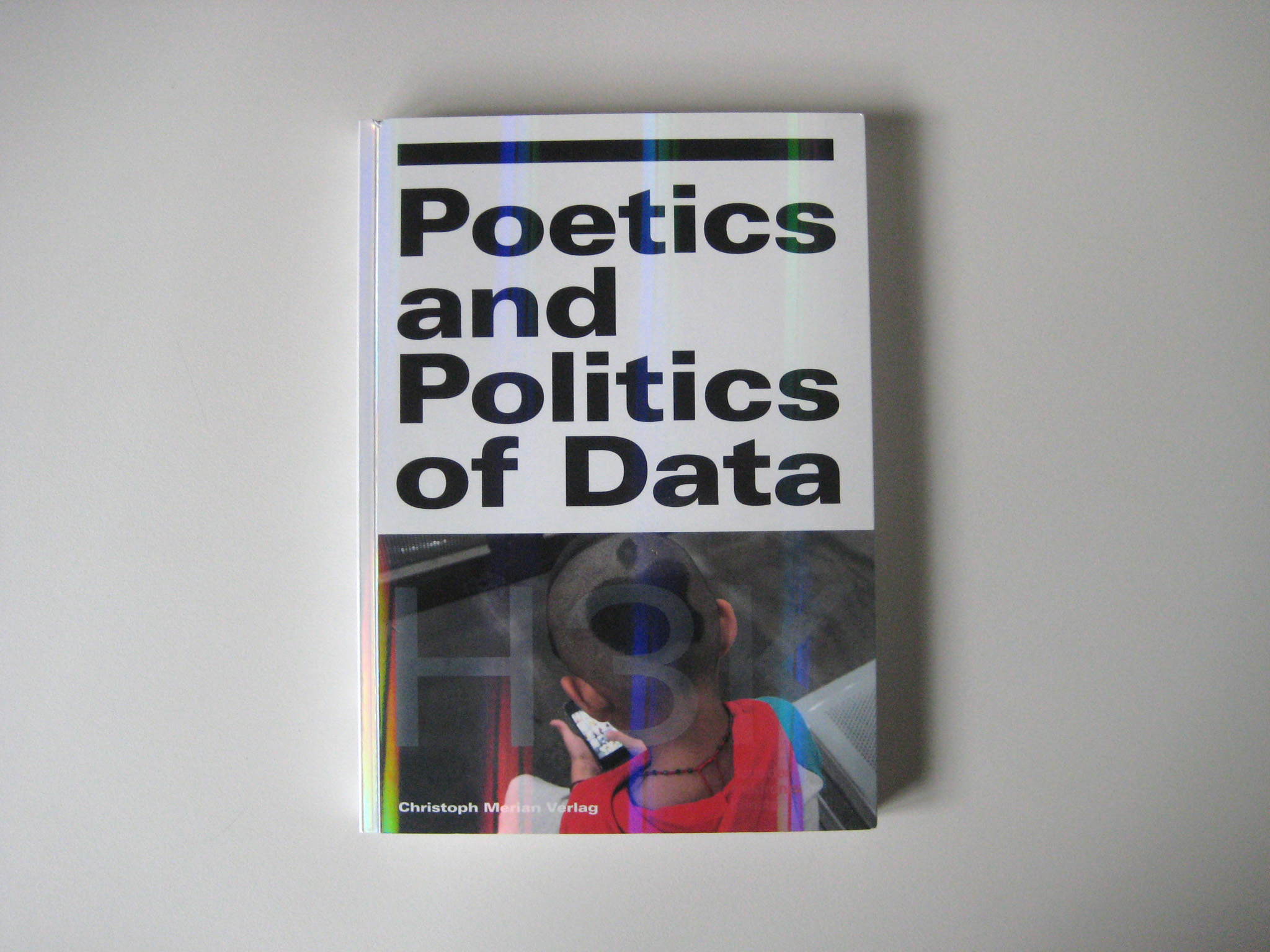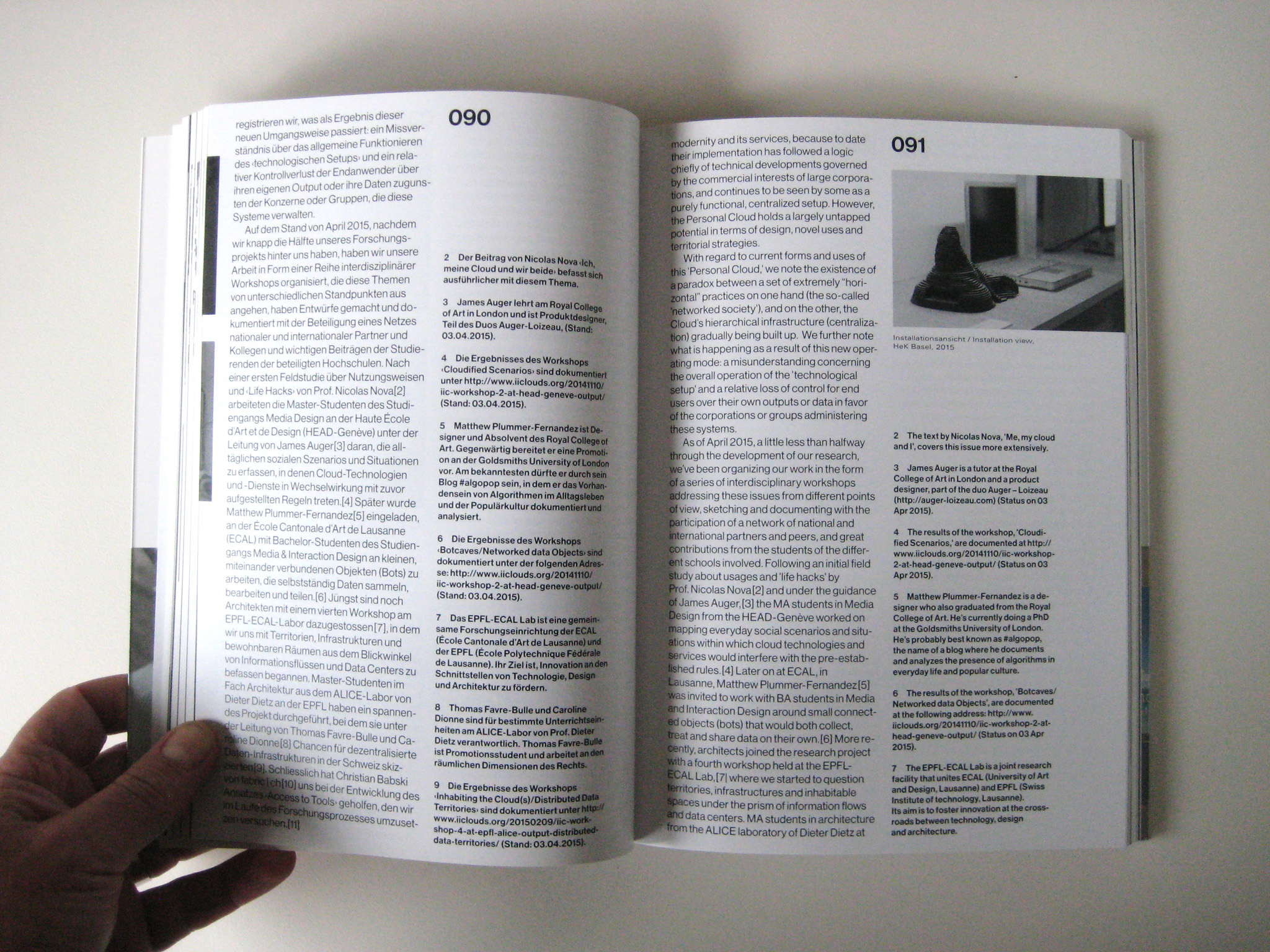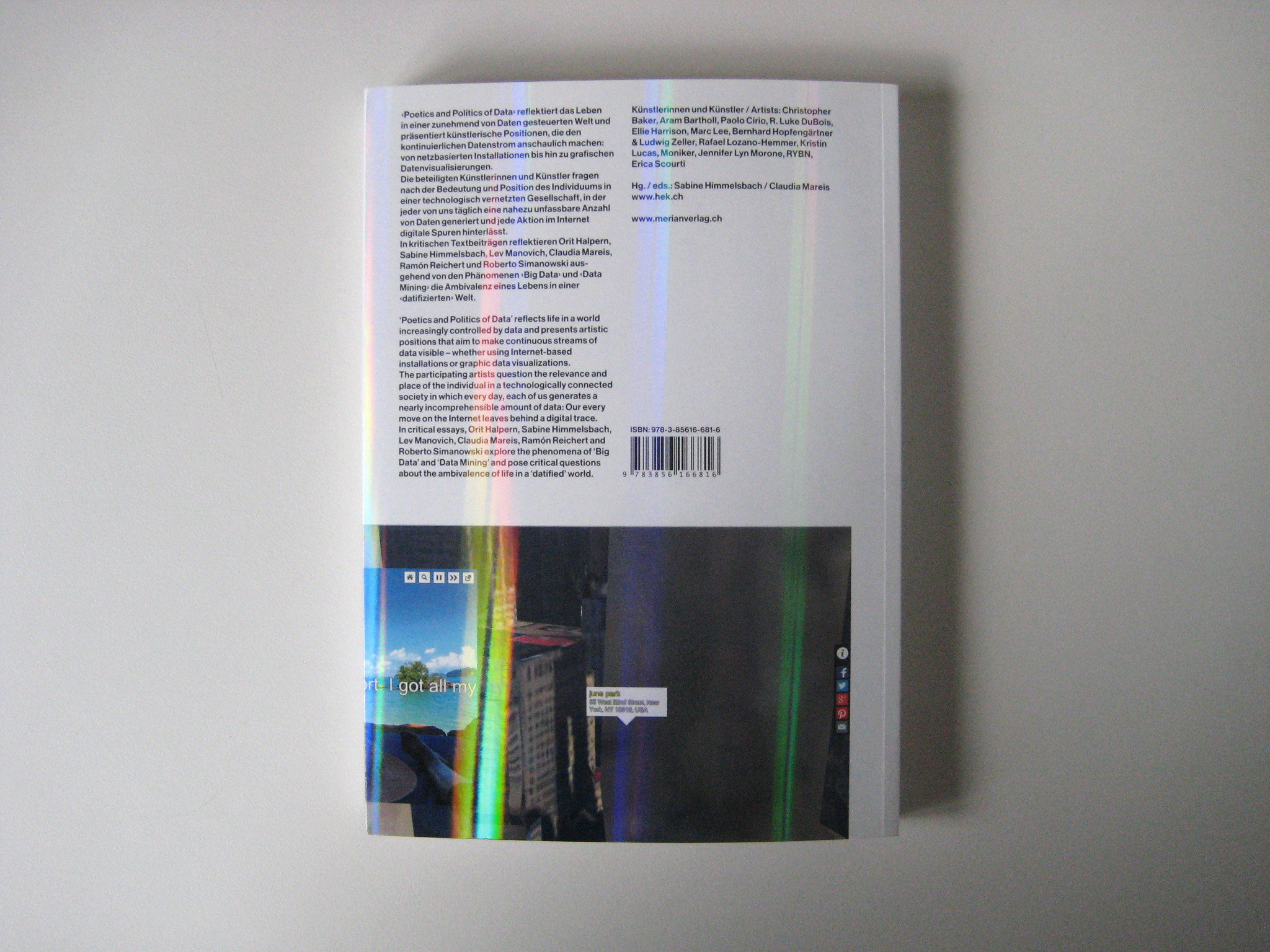Sticky Postings
All 242 fabric | rblg updated tags | #fabric|ch #wandering #reading
By fabric | ch
-----
As we continue to lack a decent search engine on this blog and as we don't use a "tag cloud" ... This post could help navigate through the updated content on | rblg (as of 09.2023), via all its tags!
FIND BELOW ALL THE TAGS THAT CAN BE USED TO NAVIGATE IN THE CONTENTS OF | RBLG BLOG:
(to be seen just below if you're navigating on the blog's html pages or here for rss readers)
--
Note that we had to hit the "pause" button on our reblogging activities a while ago (mainly because we ran out of time, but also because we received complaints from a major image stock company about some images that were displayed on | rblg, an activity that we felt was still "fair use" - we've never made any money or advertised on this site).
Nevertheless, we continue to publish from time to time information on the activities of fabric | ch, or content directly related to its work (documentation).
Monday, September 28. 2015
Poetics and Politics of Data (ed. S. Himmelsbach), HEK (Basel, 2015) | #data #clouds #society
Note: a book as a follow up of the exhibition for which fabric | ch designed the scenography last May at the Haus der elektronische Künste in Basel (project White Oblique, downloadable pdf on our website). I was implicated in a double way in the exhibition due to the fact that the content of the design research I'm jointly leading with Nicolas Nova for ECAL and HEAD, Inhabiting and Interfacing the Cloud(s), was also exhibited. I have the pleasure to publish a text in the book about the state and objectives of the ongoing research as well.
Via iiclouds.org
-----
Note: we’re pleased to see that the publication related to the exhibition and symposium Poetics & Politics of Data, curated by Sabine Himmelsbach at the H3K in Basel, has been released later this summer. The publication, with the same title as the exhibition, was first distributed in the context of the conference Data Traces. Big Data in the Context of Culture and Society that also took place at H3K on the 3rd andf 4th of July.
The book contains texts by Nicolas Nova (Me, My cloud and I) and myself (Inhabiting and Interfacing the Cloud(s). An ongoing Design Research), but also and mainly contributions by speakers of the conference (which include the american theorician Lev Manovitch, curator Sabine Himmelsbach and Prof. researcher from HGK Basel Claudia Mareis) and exhibiting artists (Moniker, Aram Bartholl, Rafael Lozano-Hemmer, Jennifer Lyn Morone, etc.)
The publication serves both as the catalogue of the exhibition and the conference proceedings. Due to its close relation to our subject of research (the book speaks about data, we’re interested in the infrastructure –both physical and digital– that host them), we’re integrating the book to our list of relevant book. The article A short history of Clouds, by Orit Halpern is obviously of direct signifiance to our work.
It can be ordered directly from H3K website:
Poetics and Politics of Data, 265 pp, ed. Christoph Merian Verlag, Basel, 2015 (29.- chf)
Friday, March 07. 2014
Cosmic Web | #topology
Via VC Blog
-----
By Manuel Lima
In the end of many of my talks, after going through a variety of compelling examples of network visualization, I wrap up with a bit of a quandary, asking the audience if there’s such a thing as a universal structure. This teaser usually comprises a side-by-side comparison between a mouse’s neuronal network and a simulation of the growth of cosmic structure and the formation of galaxies and quasars.
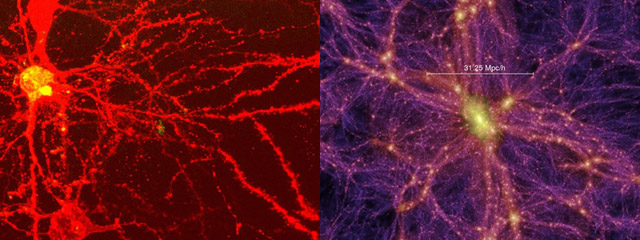
A common juxtaposition, shown during many of my lectures, between a neuronal network (left) and the vast cosmic structure (right).
As it turns out, this inquiry might not be as far-fetched as we might think. A few days ago, National Geographic posted an intriguing article titled Astronomers Get First Glimpse of Cosmic Web, where they report how scientists have for the first time captured a peek of the “vast, web-like network of diffuse gas that links all of the galaxies in the cosmos.” As stated in the article:
Leading cosmological theories suggest that galaxies are cocooned within gigantic, wispy filaments of gas. This “cosmic web” of gas-filled nebulas stretches between large, spacious voids that are tens of millions of light years wide. Like spiders, galaxies mostly appear to lie within the intersections of the long-sought webs.
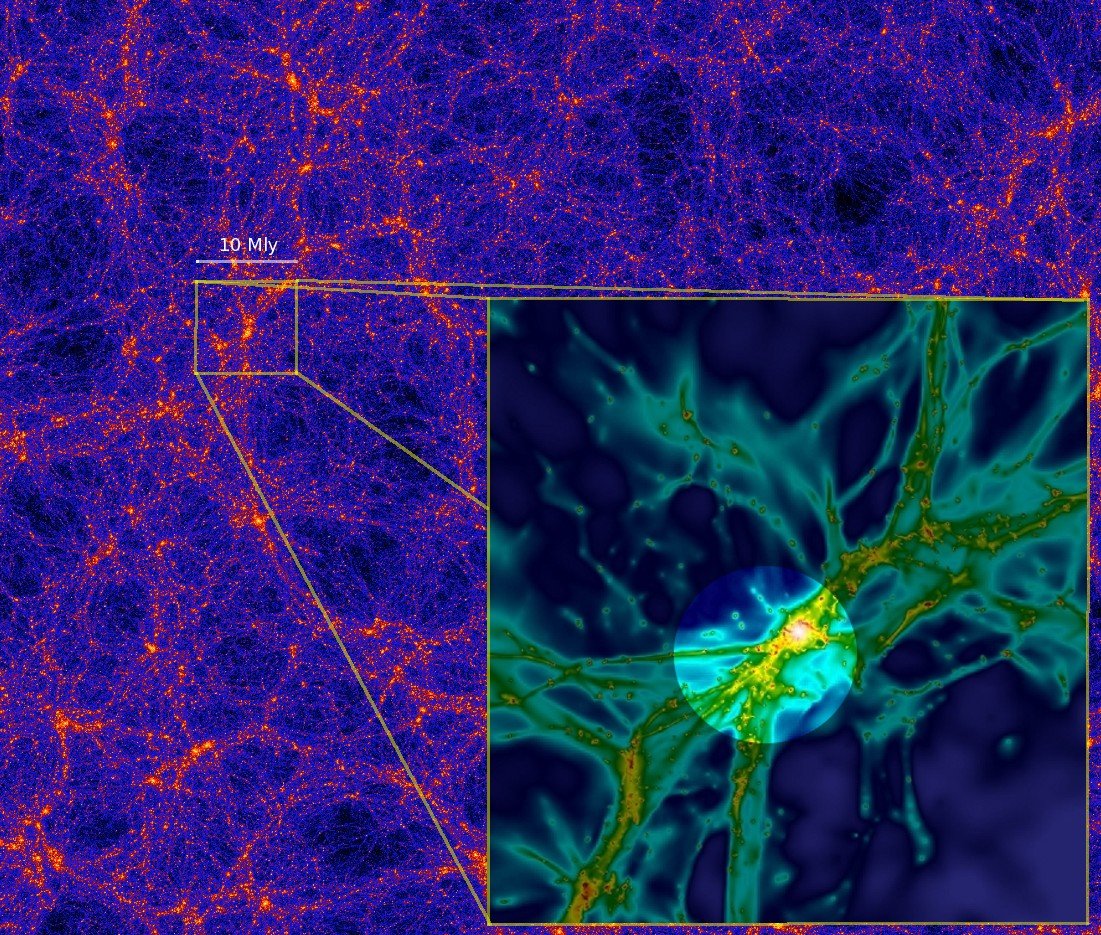
From the original image caption in the article: Computer simulations suggest that matter in the universe is distributed in a “cosmic web” of filaments, as seen in the image above from a large-scale dark-matter simulation. The inset is a zoomed-in, high-resolution image of a smaller part of the cosmic web, 10 million light-years across, from a simulation that includes gas as well as dark matter. The intense radiation from a quasar can, like a flashlight, illuminate part of the surrounding cosmic web (highlighted in the image) and make a filament of gas glow, as was observed in the case of quasar UM287. Credit: Anatoly Klypin and Joel Primack, S. Cantalupo
This find is not just impressive and thought-provoking, but it could also become a major focus of the emerging fields of complex systems and network science.
Wednesday, March 05. 2014
The Mission to Decentralize the Internet | #network #decentralization
Following my previous reblogs about The Real Privacy Problem & Snowdens's Leaks.
Via The New Yorker
-----
Posted by Joshua Kopstein
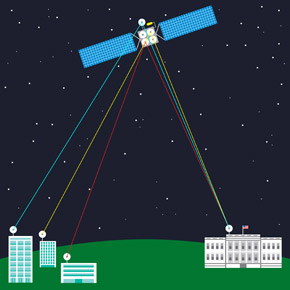
In the nineteen-seventies, the Internet was a small, decentralized collective of computers. The personal-computer revolution that followed built upon that foundation, stoking optimism encapsulated by John Perry Barlow’s 1996 manifesto “A Declaration of the Independence of Cyberspace.” Barlow described a chaotic digital utopia, where “netizens” self-govern and the institutions of old hold no sway. “On behalf of the future, I ask you of the past to leave us alone,” he writes. “You are not welcome among us. You have no sovereignty where we gather.”
This is not the Internet we know today. Nearly two decades later, a staggering percentage of communications flow through a small set of corporations—and thus, under the profound influence of those companies and other institutions. Google, for instance, now comprises twenty-five per cent of all North American Internet traffic; an outage last August caused worldwide traffic to plummet by around forty per cent.
Engineers anticipated this convergence. As early as 1967, one of the key architects of the system for exchanging small packets of data that gave birth to the Internet, Paul Baran, predicted the rise of a centralized “computer utility” that would offer computing much the same way that power companies provide electricity. Today, that model is largely embodied by the information empires of Amazon, Google, and other cloud-computing companies. Like Baran anticipated, they offer us convenience at the expense of privacy.
Internet users now regularly submit to terms-of-service agreements that give companies license to share their personal data with other institutions, from advertisers to governments. In the U.S., the Electronic Communications Privacy Act, a law that predates the Web, allows law enforcement to obtain without a warrant private data that citizens entrust to third parties—including location data passively gathered from cell phones and the contents of e-mails that have either been opened or left unattended for a hundred and eighty days. As Edward Snowden’s leaks have shown, these vast troves of information allow intelligence agencies to focus on just a few key targets in order to monitor large portions of the world’s population.
One of those leaks, reported by the Washington Post in late October (2013), revealed that the National Security Agency secretly wiretapped the connections between data centers owned by Google and Yahoo, allowing the agency to collect users’ data as it flowed across the companies’ networks. Google engineers bristled at the news, and responded by encrypting those connections to prevent future intrusions; Yahoo has said it plans to do so by next year. More recently, Microsoft announced it would do the same, as well as open “transparency centers” that will allow some of its software’s source code to be inspected for hidden back doors. (However, that privilege appears to only extend to “government customers.”) On Monday, eight major tech firms, many of them competitors, united to demand an overhaul of government transparency and surveillance laws.
Still, an air of distrust surrounds the U.S. cloud industry. The N.S.A. collects data through formal arrangements with tech companies; ingests Web traffic as it enters and leaves the U.S.; and deliberately weakens cryptographic standards. A recently revealed document detailing the agency’s strategy specifically notes its mission to “influence the global commercial encryption market through commercial relationships” with companies developing and deploying security products.
One solution, espoused by some programmers, is to make the Internet more like it used to be—less centralized and more distributed. Jacob Cook, a twenty-three-year-old student, is the brains behind ArkOS, a lightweight version of the free Linux operating system. It runs on the credit-card-sized Raspberry Pi, a thirty-five dollar microcomputer adored by teachers and tinkerers. It’s designed so that average users can create personal clouds to store data that they can access anywhere, without relying on a distant data center owned by Dropbox or Amazon. It’s sort of like buying and maintaining your own car to get around, rather than relying on privately owned taxis. Cook’s mission is to “make hosting a server as easy as using a desktop P.C. or a smartphone,” he said.
Like other privacy advocates, Cook’s goal isn’t to end surveillance, but to make it harder to do en masse. “When you couple a secure, self-hosted platform with properly implemented cryptography, you can make N.S.A.-style spying and network intrusion extremely difficult and expensive,” he told me in an e-mail.
Persuading consumers to ditch the convenience of the cloud has never been an easy sell, however. In 2010, a team of young programmers announced Diaspora, a privacy-centric social network, to challenge Facebook’s centralized dominance. A year later, Eben Moglen, a law professor and champion of the Free Software movement, proposed a similar solution called the Freedom Box. The device he envisioned was to be a small computer that plugs into your home network, hosting files, enabling secure communication, and connecting to other boxes when needed. It was considered a call to arms—you alone would control your data.
But, while both projects met their fund-raising goals and drummed up a good deal of hype, neither came to fruition. Diaspora’s team fell into disarray after a disappointing beta launch, personal drama, and the appearance of new competitors such as Google+; apart from some privacy software released last year, Moglen’s Freedom Box has yet to materialize at all.
“There is a bigger problem with why so many of these efforts have failed” to achieve mass adoption, said Brennan Novak, a user-interface designer who works on privacy tools. The challenge, Novak said, is to make decentralized alternatives that are as secure, convenient, and seductive as a Google account. “It’s a tricky thing to pin down,” he told me in an encrypted online chat. “But I believe the problem exists somewhere between the barrier to entry (user-interface design, technical difficulty to set up, and over-all user experience) versus the perceived value of the tool, as seen by Joe Public and Joe Amateur Techie.”
One of Novak’s projects, Mailpile, is a crowd-funded e-mail application with built-in security tools that are normally too onerous for average people to set up and use—namely, Phil Zimmermann’s revolutionary but never widely adopted Pretty Good Privacy. “It’s a hard thing to explain…. A lot of peoples’ eyes glaze over,” he said. Instead, Mailpile is being designed in a way that gives users a sense of their level of privacy, without knowing about encryption keys or other complicated technology. Just as important, the app will allow users to self-host their e-mail accounts on a machine they control, so it can run on platforms like ArkOS.
“There already exist deep and geeky communities in cryptology or self-hosting or free software, but the message is rarely aimed at non-technical people,” said Irina Bolychevsky, an organizer for Redecentralize.org, an advocacy group that provides support for projects that aim to make the Web less centralized.
Several of those projects have been inspired by Bitcoin, the math-based e-money created by the mysterious Satoshi Nakamoto. While the peer-to-peer technology that Bitcoin employs isn’t novel, many engineers consider its implementation an enormous technical achievement. The network’s “nodes”—users running the Bitcoin software on their computers—collectively check the integrity of other nodes to ensure that no one spends the same coins twice. All transactions are published on a shared public ledger, called the “block chain,” and verified by “miners,” users whose powerful computers solve difficult math problems in exchange for freshly minted bitcoins. The system’s elegance has led some to wonder: if money can be decentralized and, to some extent, anonymized, can’t the same model be applied to other things, like e-mail?
Bitmessage is an e-mail replacement proposed last year that has been called the “the Bitcoin of online communication.” Instead of talking to a central mail server, Bitmessage distributes messages across a network of peers running the Bitmessage software. Unlike both Bitcoin and e-mail, Bitmessage “addresses” are cryptographically derived sequences that help encrypt a message’s contents automatically. That means that many parties help store and deliver the message, but only the intended recipient can read it. Another option obscures the sender’s identity; an alternate address sends the message on her behalf, similar to the anonymous “re-mailers” that arose from the cypherpunk movement of the nineteen-nineties.
Another ambitious project, Namecoin, is a P2P system almost identical to Bitcoin. But instead of currency, it functions as a decentralized replacement for the Internet’s Domain Name System. The D.N.S. is the essential “phone book” that translates a Web site’s typed address (www.newyorker.com) to the corresponding computer’s numerical I.P. address (192.168.1.1). The directory is decentralized by design, but it still has central points of authority: domain registrars, which buy and lease Web addresses to site owners, and the U.S.-based Internet Corporation for Assigned Names and Numbers, or I.C.A.N.N., which controls the distribution of domains.
The infrastructure does allow for large-scale takedowns, like in 2010, when the Department of Justice tried to seize ten domains it believed to be hosting child pornography, but accidentally took down eighty-four thousand innocent Web sites in the process. Instead of centralized registrars, Namecoin uses cryptographic tokens similar to bitcoins to authenticate ownership of “.bit” domains. In theory, these domain names can’t be hijacked by criminals or blocked by governments; no one except the owner can surrender them.
Solutions like these follow a path different from Mailpile and ArkOS. Their peer-to-peer architecture holds the potential for greatly improved privacy and security on the Internet. But existing apart from commonly used protocols and standards can also preclude any possibility of widespread adoption. Still, Novak said, the transition to an Internet that relies more extensively on decentralized, P2P technology is “an absolutely essential development,” since it would make many attacks by malicious actors—criminals and intelligence agencies alike—impractical.
Though Snowden has raised the profile of privacy technology, it will be up to engineers and their allies to make that technology viable for the masses. “Decentralization must become a viable alternative,” said Cook, the ArkOS developer, “not just to give options to users that can self-host, but also to put pressure on the political and corporate institutions.”
“Discussions about innovation, resilience, open protocols, data ownership and the numerous surrounding issues,” said Redecentralize’s Bolychevsky, “need to become mainstream if we want the Internet to stay free, democratic, and engaging.”
Illustration by Maximilian Bode.
fabric | rblg
This blog is the survey website of fabric | ch - studio for architecture, interaction and research.
We curate and reblog articles, researches, writings, exhibitions and projects that we notice and find interesting during our everyday practice and readings.
Most articles concern the intertwined fields of architecture, territory, art, interaction design, thinking and science. From time to time, we also publish documentation about our own work and research, immersed among these related resources and inspirations.
This website is used by fabric | ch as archive, references and resources. It is shared with all those interested in the same topics as we are, in the hope that they will also find valuable references and content in it.
Quicksearch
Categories
Calendar
|
|
July '25 | |||||
| Mon | Tue | Wed | Thu | Fri | Sat | Sun |
| 1 | 2 | 3 | 4 | 5 | 6 | |
| 7 | 8 | 9 | 10 | 11 | 12 | 13 |
| 14 | 15 | 16 | 17 | 18 | 19 | 20 |
| 21 | 22 | 23 | 24 | 25 | 26 | 27 |
| 28 | 29 | 30 | 31 | |||
